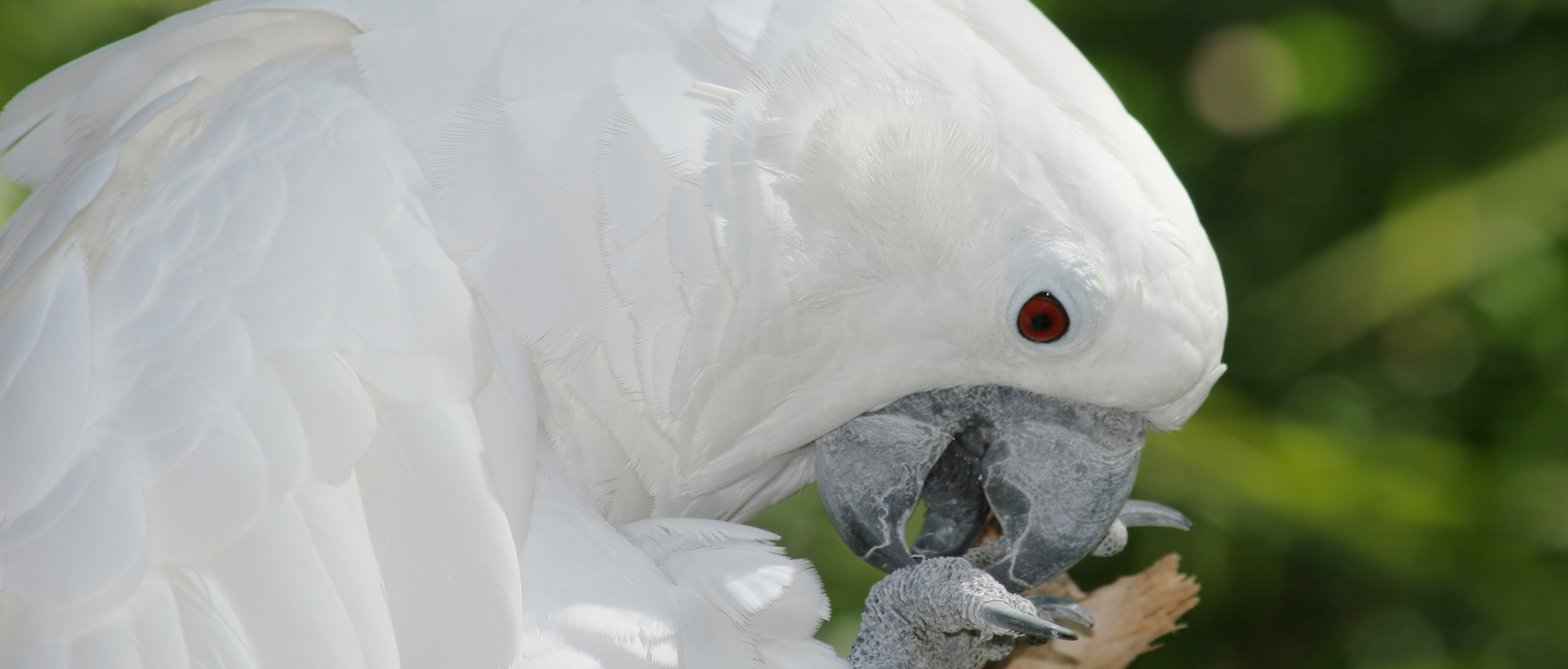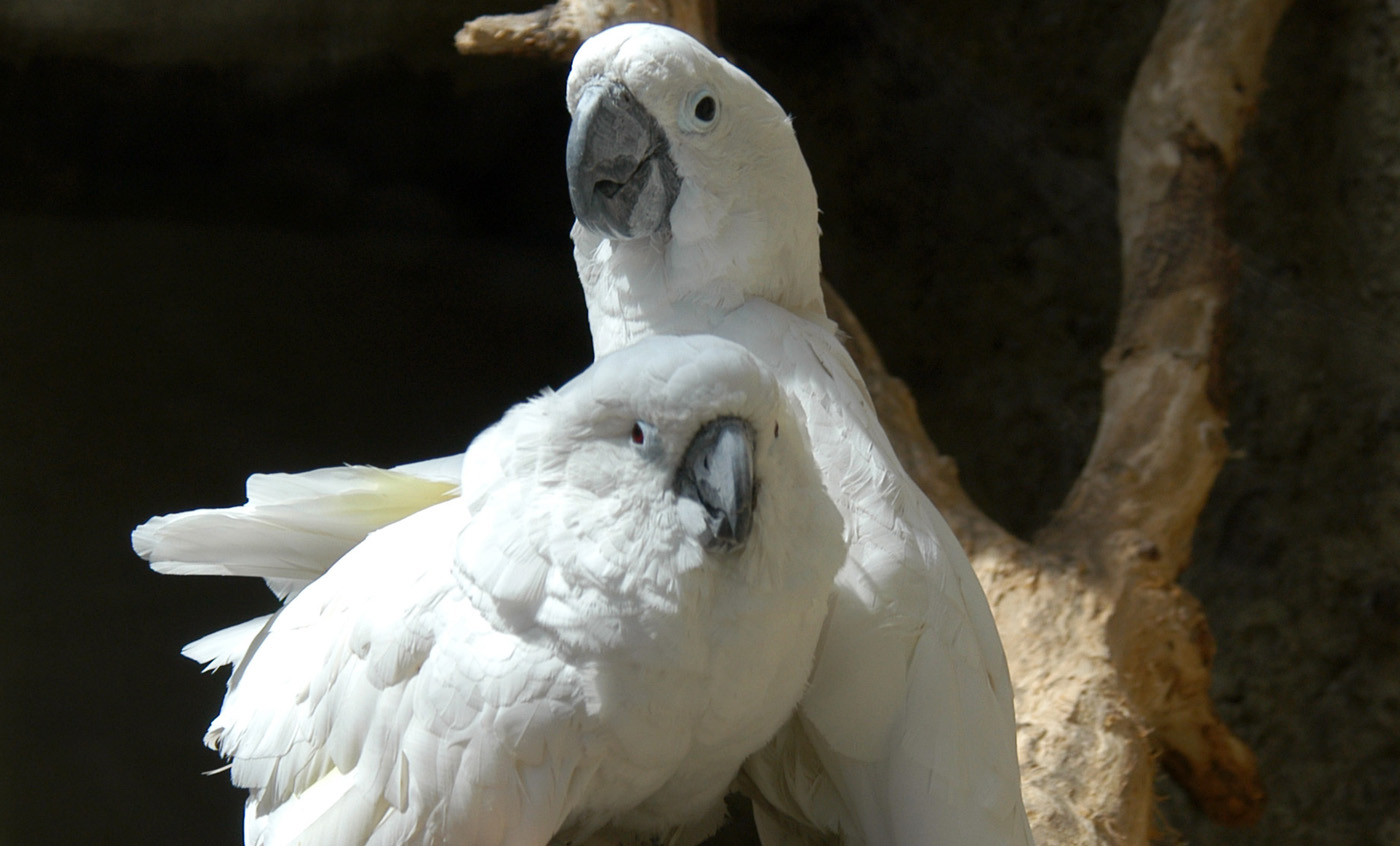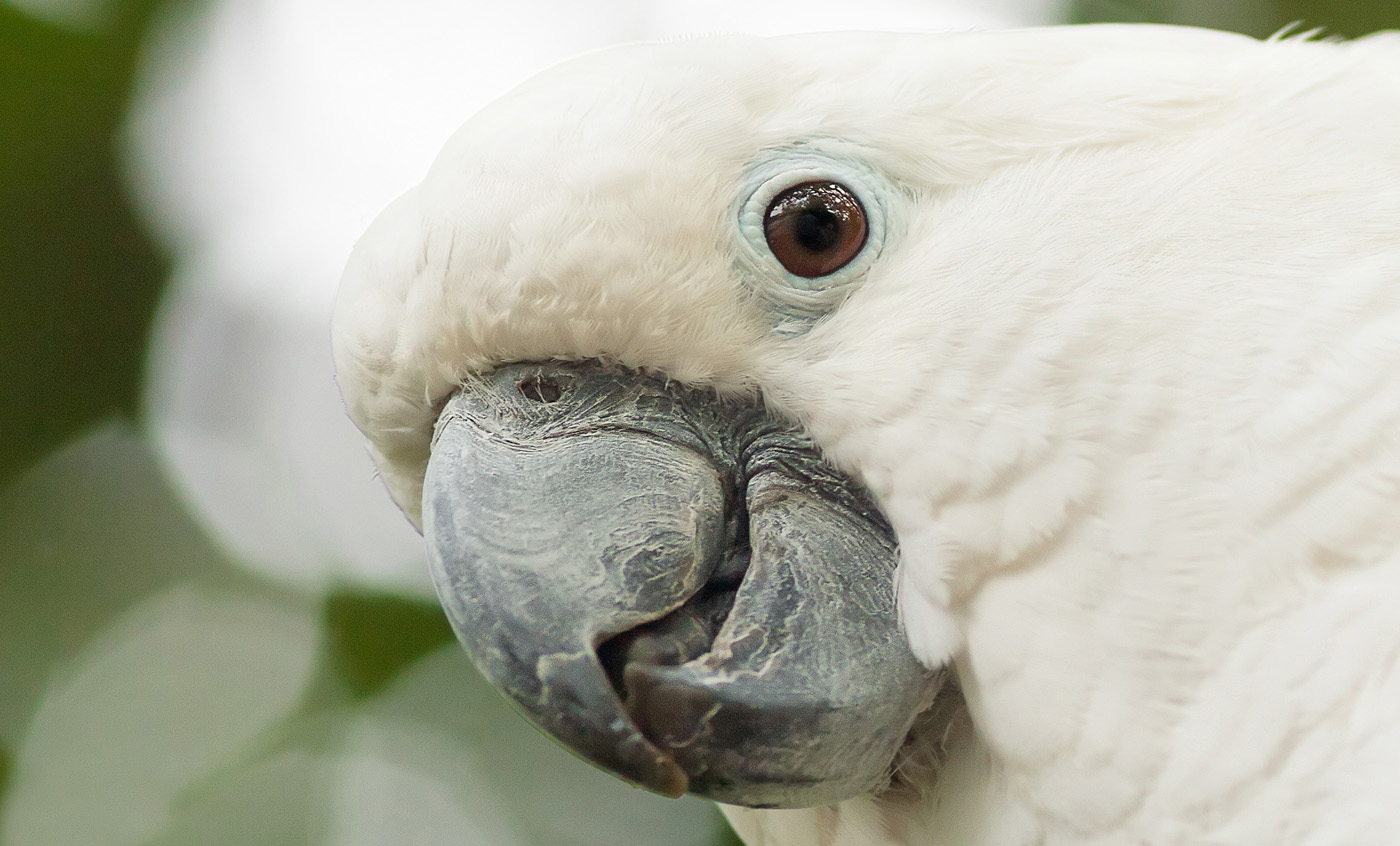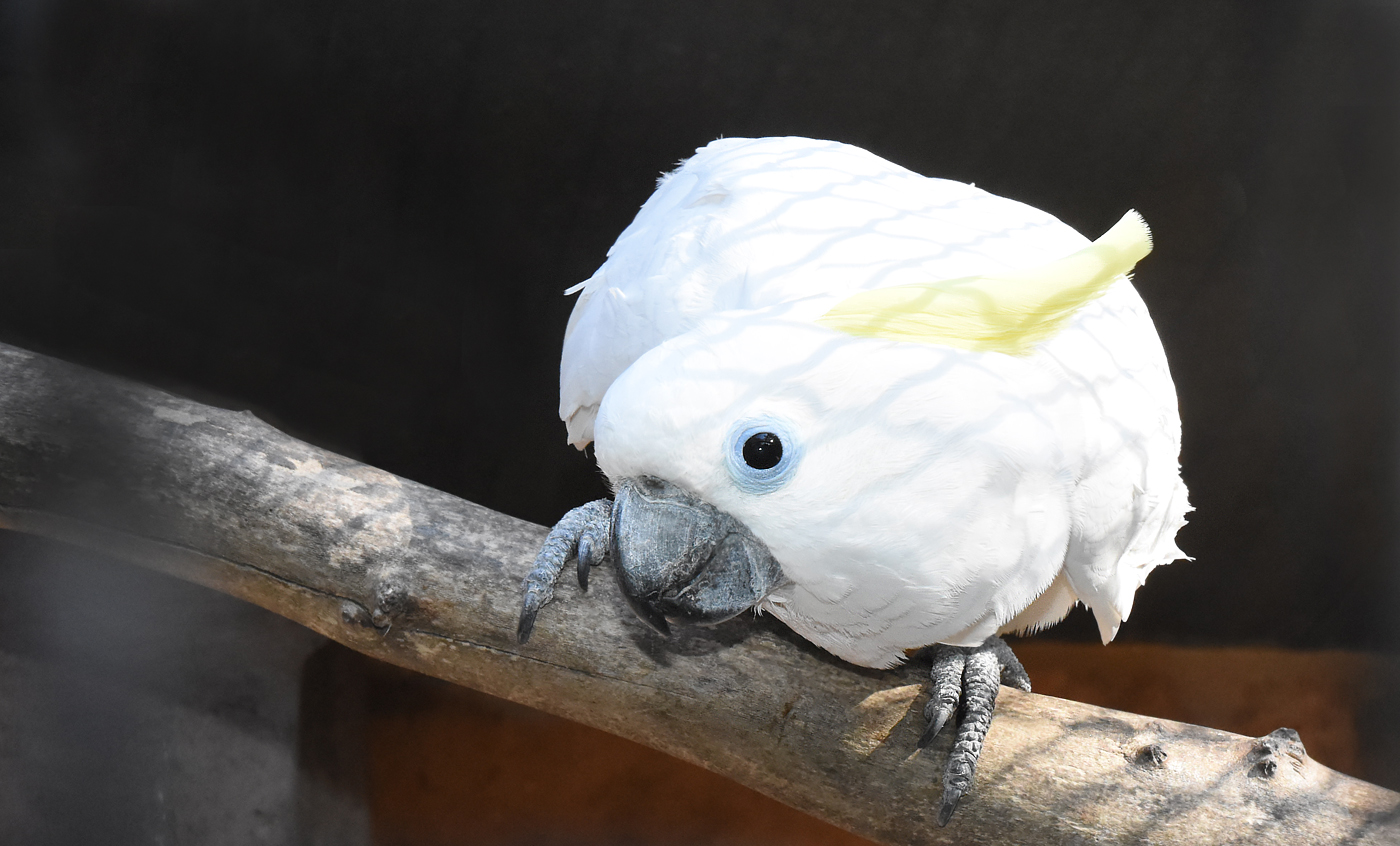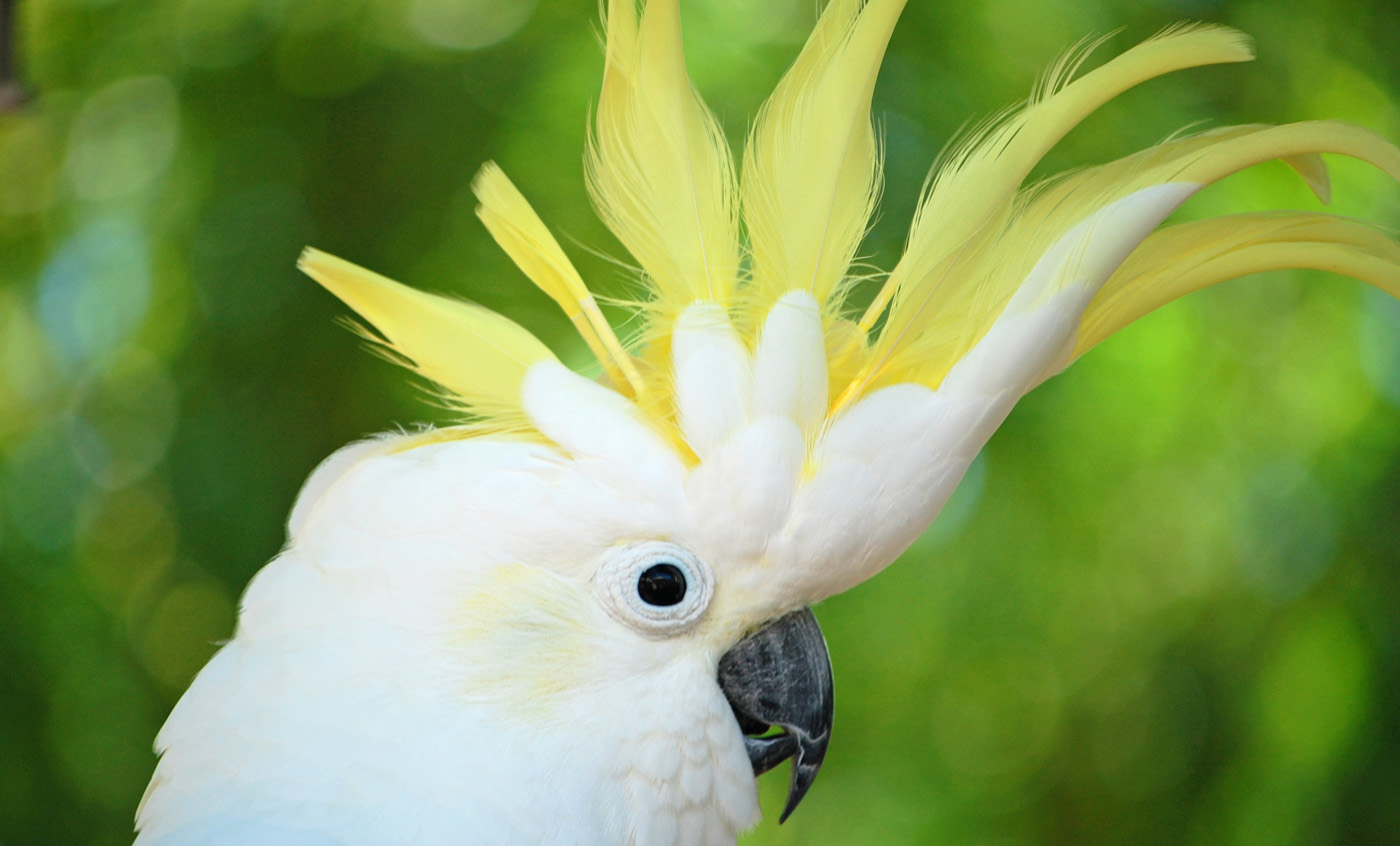White cockatoo
This species, now rarely found in the wild, inhabits the forests of the islands of Halmahera, Tidore, Batjan and Obi among others, in the Moluccan archipelago.
A tree-dweller, it is most often found in pairs or small groups in the topmost branches of the highest trees in the forest. Although it was common until a few years ago, its numbers have declined rapidly and it is difficult to see nowadays.
Natural habit
Forests of islands Moluccas
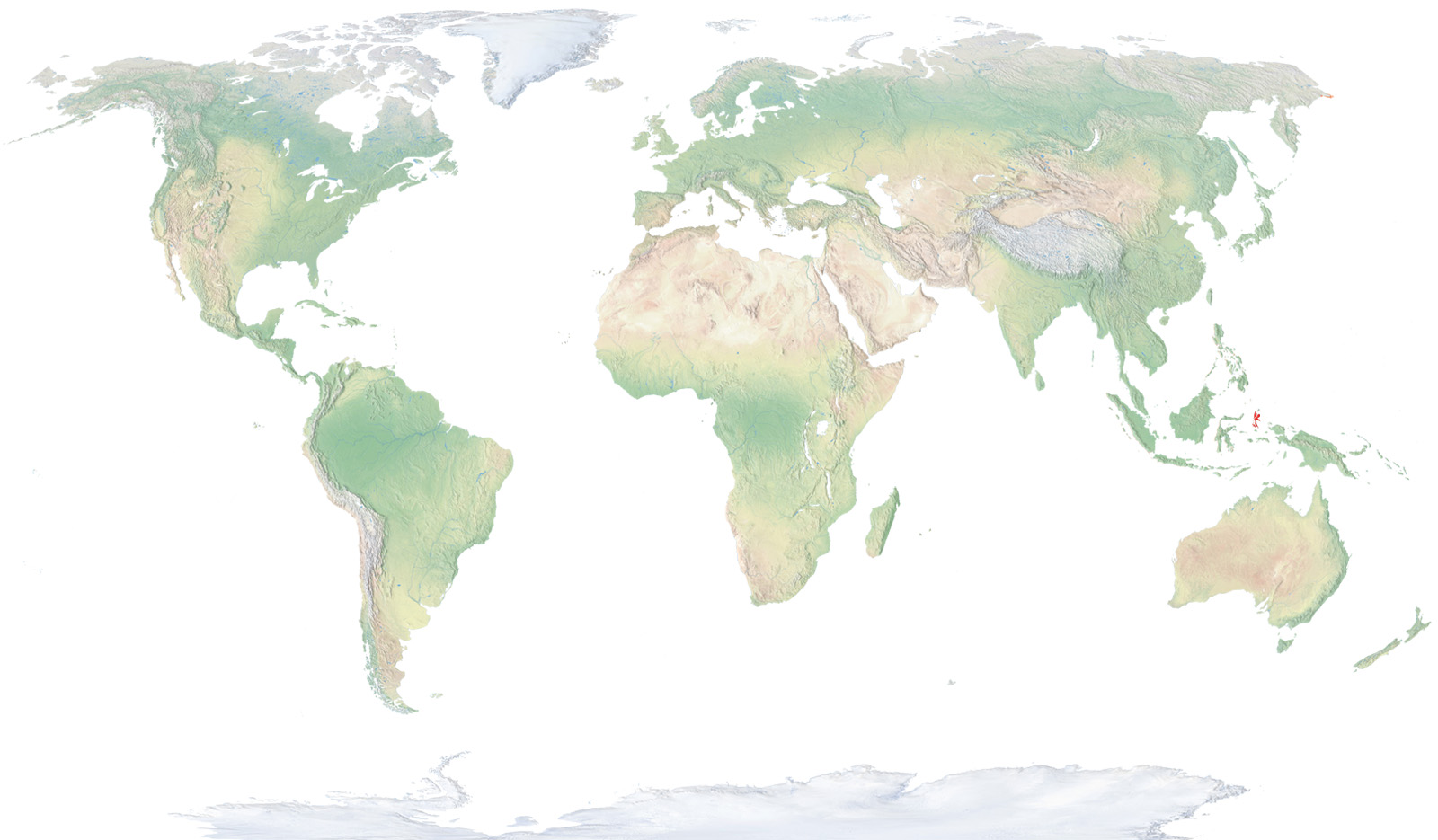
- Distribution / Resident
- Breeding
- Wintering
- Subspecies
Risk level
- Extint
- Extint in the wild
- Critically endangered
- In Danger
- Vulnerable
- Near threatened
- Minor concern
- Insufficient data
- Not evaluated
Taxonomy
Physical characteristics
Biology
Reproduction
Biology
The white cockatoo is a bird in the Cacatua family, in the Psittaciformes order, which is primarily characterised by the bright white colour of its plumage. It has a slight yellowish hue on the inside of its wings and tail, and the orbital skin, with no feathers, is a blue colour. It has a considerably long crest, which moves forward slightly when standing on end. It has the classic parrot shape, although it is more robust and compact.
It mainly inhabits primary low-lying forests and lands that are quite flat and plains on the Maluka Islands.
It mainly feeds on seeds and fruits, although recent studies have revealed that it can complement this diet with quite large insects.
The breeding season generally starts in May, although nesting attempts have been reported even earlier. It makes its nest in holes in trees, laying two to three eggs, which it incubates from 27 to 28 days.
It is quite solitary—generally in a pair—and larger groups have rarely been witnessed, always with very few individuals.
It is endangered. Due to the loss of habitat and capture of birds for the pet market, this species has shrunk greatly, moving from a vulnerable status to seriously endangered in a short time. If the island’s development pace and individual development there continues at the same rate, it is estimated that this cockatoo may be irreversibly headed for extinction.



